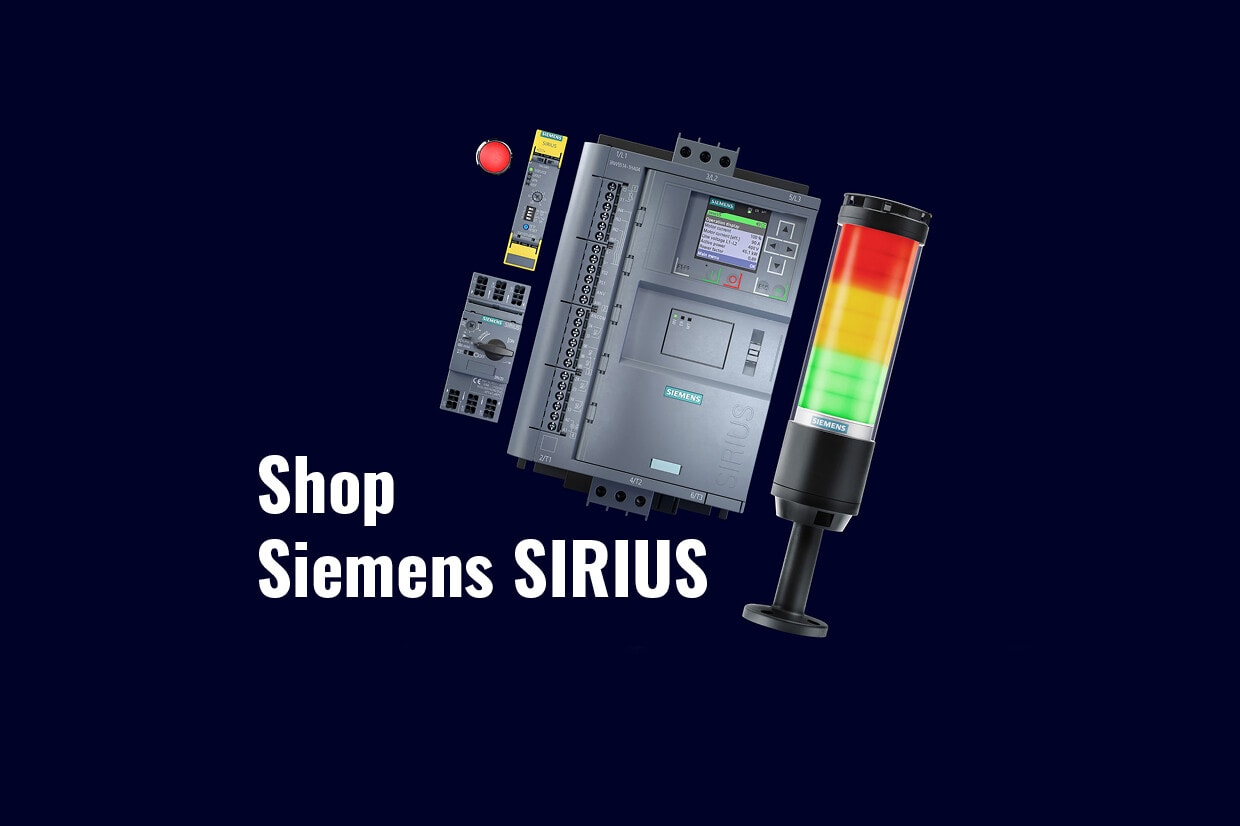Siemens SM 1231 Series PLC I/O Module for Use with CPU 1211, CPU 1212, CPU 1214, Analogue
- RS Stock No.:
- 810-4141
- Distrelec Article No.:
- 301-24-486
- Mfr. Part No.:
- 6ES7231-5PF32-0XB0
- Brand:
- Siemens

Subtotal (1 unit)*
£589.84
(exc. VAT)
£707.81
(inc. VAT)
FREE delivery for orders over £50.00
In Stock
- 33 unit(s) ready to ship from another location
Need more? Click ‘Check delivery dates’ to find extra stock and lead times.
Units | Per unit |
|---|---|
| 1 + | £589.84 |
*price indicative
- RS Stock No.:
- 810-4141
- Distrelec Article No.:
- 301-24-486
- Mfr. Part No.:
- 6ES7231-5PF32-0XB0
- Brand:
- Siemens
Specifications
Technical Reference
Legislation and Compliance
Product Details
Find similar products by selecting one or more attributes.
Select all | Attribute | Value |
|---|---|---|
| Brand | Siemens | |
| Accessory Type | PLC I/O Module | |
| Range | SIMATIC | |
| Series | SM 1231 | |
| Input Type | Analogue | |
| Number of Inputs | 8 | |
| For Use With | CPU 1211, CPU 1212, CPU 1214 | |
| Maximum Operating Temperature | +60°C | |
| Dimensions | 100 x 70 x 75 mm | |
| Select all | ||
|---|---|---|
Brand Siemens | ||
Accessory Type PLC I/O Module | ||
Range SIMATIC | ||
Series SM 1231 | ||
Input Type Analogue | ||
Number of Inputs 8 | ||
For Use With CPU 1211, CPU 1212, CPU 1214 | ||
Maximum Operating Temperature +60°C | ||
Dimensions 100 x 70 x 75 mm | ||
- COO (Country of Origin):
- CN
Siemens PLC I/O Module, Analogue Input Type, 8 Inputs - SIMATIC Series - 6ES7231-5PF32-0XB0
Do you need to take precise temperature readings during your industrial automation processes? Opt for this PLC I/O module from Siemens. Its a resistance temperature detector with eight resistance thermometer inputs that support copper, nickel and platinum sensing elements to deliver a wide measurement range from -200°C to +850°C. To enable an attached PLC to respond to temperature data, this module converts the analogue input signal to a digital value. Use it with a Siemens SIMATIC S7-1200 series CPU to put together a modular PLC system that meets your needs.
• 15-bit+ sign resolution offers a high level of accuracy
• Operating temperature range of -40°C to +70°C for use in extreme environments
• IP20 rating indicates the unit is safe to touch
• LED indicators and integrated diagnostics functions simplify fault detection for straightforward maintenance
• Operating temperature range of -40°C to +70°C for use in extreme environments
• IP20 rating indicates the unit is safe to touch
• LED indicators and integrated diagnostics functions simplify fault detection for straightforward maintenance
How does an RTD work?
An RTD like this one uses the principle of temperature resistivity. As the temperature of a metal increases, so does its electrical resistance. Platinum, copper and nickel have a predictable relationship between temperature and resistance. This means that as a current passes through a sensor containing one of these metals, a measurement of the resistance can determine the temperature value.
Related links
- Siemens SM 1231 Series PLC I/O Module for Use with CPU 1211 CPU 1214, Analogue
- Siemens E10A Series PLC I/O Module for Use with CPU 1211 CPU 1214 24 V
- Siemens SM 1231 Series PLC I/O Module for Use with SIMATIC S7-1200 Series Analogue, 24 V
- Siemens SM 1231 Series PLC I/O Module for Use with SIMATIC S7-1200 24 V
- Siemens PLC I/O Module for Use with SIMATIC S7-1200 Series, Analogue
- Siemens IB IL 24 DI8/HD-XC-PAC Series PLC I/O Module for Use with SIMATIC S7-1200, Analogue
- Siemens PLC I/O Module for Use with SIMATIC S7-1200 Series Differential, 24 V dc
- Siemens SM 1232 Series PLC I/O Module for Use with SIMATIC S7-1200 Series Analogue, 24 V

